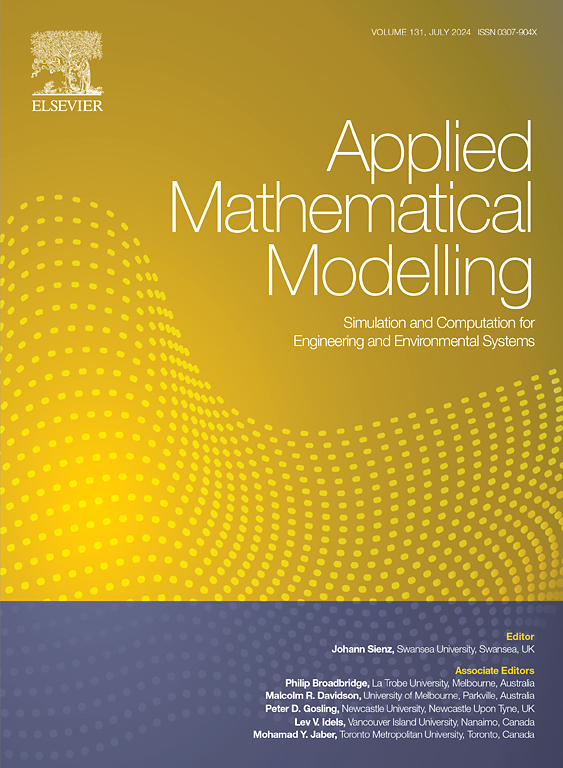仓库空间动态利用的随机分析
IF 4.4
2区 工程技术
Q1 ENGINEERING, MULTIDISCIPLINARY
引用次数: 0
摘要
提高现代仓库的容积空间利用率是仓库布局设计的关键目标,因此准确估算不同布局的空间利用率至关重要。然而,现代仓库中异质库存单位(SKU)的动态需求和补货过程给准确评估空间利用率带来了巨大挑战。传统模型依赖于假设需求和生产流程恒定的确定性框架,无法完全捕捉实际场景中需求到达、规模和补货时间的异质性和随机性。本研究旨在开发一个框架,用于计算现代分块堆垛仓库中的容积空间利用率,同时考虑异质性和随机性。我们研究了仓库场景中的两种模型:销售损失模型(超额需求损失)和滞销模型(未满足需求积压)。对于每种模型,我们都使用连续时间马尔可夫链分析框架,推导出仓库空间利用率的三种关键空间浪费类型的闭式表达式:蜂窝、过道和通道顶部空间浪费。利用这些表达式,我们分析了这些浪费之间的权衡,并确定了能使空间利用率最大化的最佳通道深度。我们的案例研究表明,在随机环境中,所提出的计算框架可以更准确地估计空间利用率,与文献中的确定性方法相比,应用所获得的最佳车道深度可以显著提高空间利用率。这凸显了将需求和补货的随机性和异质性纳入布局设计的重要性。此外,通过研究空间利用率对不同需求流程和补货策略的敏感性,我们为管理者提供了根据 SKU 需求和补货模式的变化调整仓库布局设计的见解。本文章由计算机程序翻译,如有差异,请以英文原文为准。
A stochastic analysis of the dynamic space utilization in warehouses
Improving the volume space utilization of modern warehouses is a critical objective in warehouse layout design, making the accurate estimation of space utilization across different layouts essential. However, the dynamic demand and replenishment processes of heterogeneous stock keeping units (SKUs) in modern warehouses present significant challenges in accurately assessing space utilization. Traditional models have relied on deterministic frameworks that assume constant demand and production processes, which do not fully capture the heterogeneity and stochasticity in demand arrivals, sizes, and replenishment times encountered in practical scenarios. This study aims to develop a framework for computing volume space utilization in modern block stacking warehouses, incorporating both heterogeneity and stochasticity. We investigate two models in warehouse scenarios: the lost sale model, where excess demand is lost, and the backorder model, where unmet demand is backlogged. For each model, we derive the closed-form expressions of three key types of space wastes that characterize the space utilization of warehouses: honeycombing, aisle, and top-of-lane space wastes, using a continuous-time Markov chain analytical framework. Utilizing these expressions, we analyze the tradeoffs among these wastes and identify the optimal lane depth that maximizes space utilization. Our case studies show that, in a stochastic environment, the proposed computational framework allows for a more accurate estimation of space utilization, and the application of the obtained optimal lane depth can achieve significantly higher space utilization than deterministic methods found in the literature. This underscores the importance of incorporating stochasticity and heterogeneity of demand and replenishment in layout design. Additionally, by investigating the sensitivity of space utilization to varying demand processes and replenishment strategies, we provide managerial insights for adapting warehouse layout designs in response to changes in SKUs' demand and replenishment patterns.
求助全文
通过发布文献求助,成功后即可免费获取论文全文。
去求助
来源期刊

Applied Mathematical Modelling
数学-工程:综合
CiteScore
9.80
自引率
8.00%
发文量
508
审稿时长
43 days
期刊介绍:
Applied Mathematical Modelling focuses on research related to the mathematical modelling of engineering and environmental processes, manufacturing, and industrial systems. A significant emerging area of research activity involves multiphysics processes, and contributions in this area are particularly encouraged.
This influential publication covers a wide spectrum of subjects including heat transfer, fluid mechanics, CFD, and transport phenomena; solid mechanics and mechanics of metals; electromagnets and MHD; reliability modelling and system optimization; finite volume, finite element, and boundary element procedures; modelling of inventory, industrial, manufacturing and logistics systems for viable decision making; civil engineering systems and structures; mineral and energy resources; relevant software engineering issues associated with CAD and CAE; and materials and metallurgical engineering.
Applied Mathematical Modelling is primarily interested in papers developing increased insights into real-world problems through novel mathematical modelling, novel applications or a combination of these. Papers employing existing numerical techniques must demonstrate sufficient novelty in the solution of practical problems. Papers on fuzzy logic in decision-making or purely financial mathematics are normally not considered. Research on fractional differential equations, bifurcation, and numerical methods needs to include practical examples. Population dynamics must solve realistic scenarios. Papers in the area of logistics and business modelling should demonstrate meaningful managerial insight. Submissions with no real-world application will not be considered.
 求助内容:
求助内容: 应助结果提醒方式:
应助结果提醒方式:


